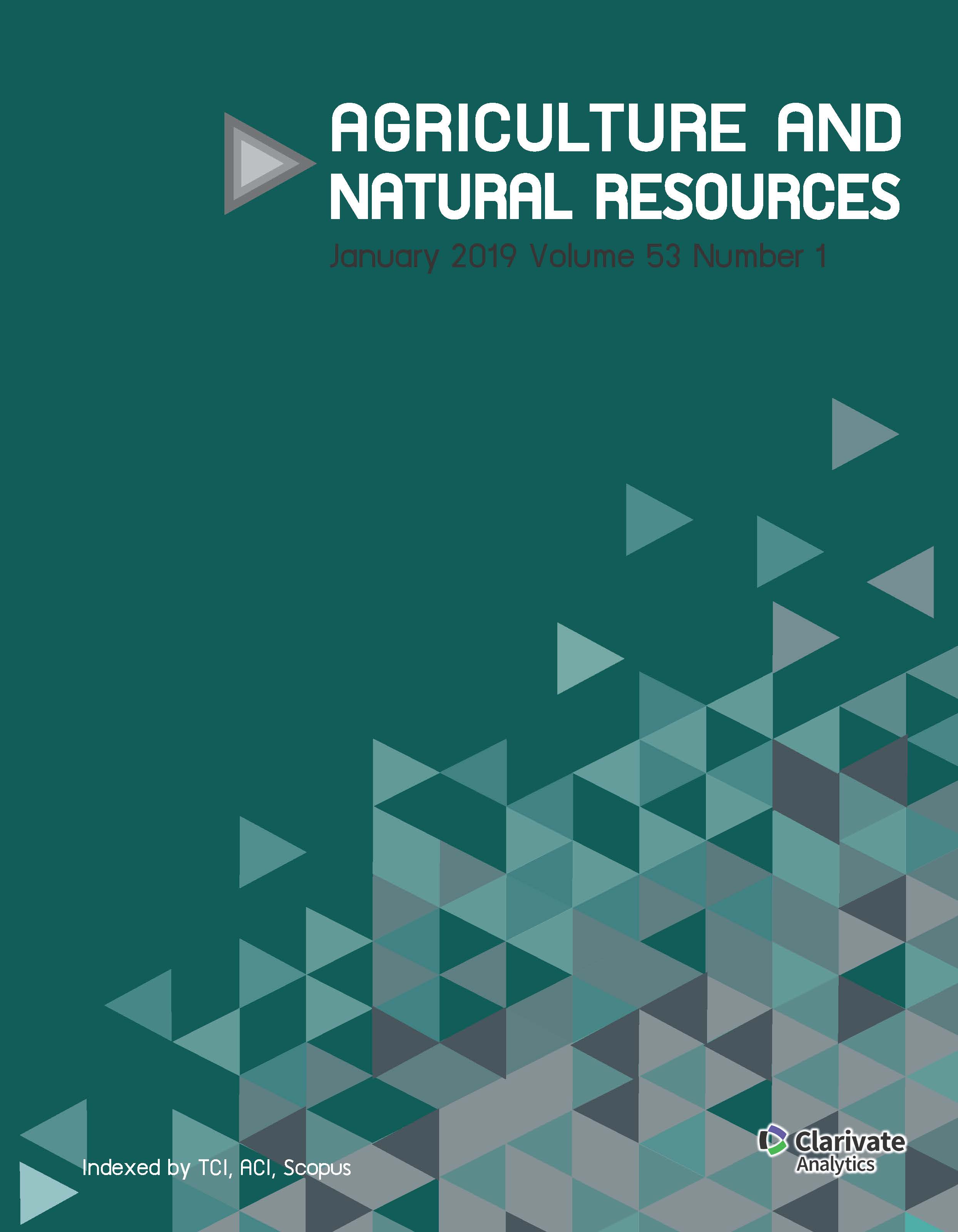MaxEnt model for predicting potential distribution of Vitex glabrata R.Br. in Thailand
Keywords:
Brassinosteroids, Habitat suitability, MaxEnt model, Species distribution model, Vitex glabrataAbstract
In addition to various ethnobotanical uses, Vitex glabrata R.Br. is becoming important in the agricultural chemical industry, because its bark contains a high amount of 20-hydroxyecdysone. This compound is a major substrate for synthesis of the brassinosteroid-mimic compound named 7,8-dihydro-8α-20-hydroxyecdysone (DHECD) which has been shown to increase agricultural productivity. Therefore, surveying the habitat suitability of V. glabrata is important for sustainable management of DHECD production. A maximum entropy (MaxEnt) species distribution model was used to predict the probability of occurrence and to determine relevant environmental factors influencing the distribution of V. glabrata in Thailand. Presence-only data was used from 44 verified localities of specimens in Thai herbaria and 17 geo-referenced locations from the Global Biodiversity Information Facility. Twenty environmental variables (19 bioclimatic variables and also altitude from the WorldClim database), were used to model its distribution and potential habitat. Environmental variable contributions were evaluated using jackknife and randomized testing. The important variables in this model were: temperature seasonality, altitude and precipitation of driest month, respectively. A high probability of V. glabrata occurrence was predicted for approximately 21% of Thailand, including the south and some eastern and western parts. Another 28% of the country (some of the northern, northeastern and western parts) had a medium probability of occurrence for V. glabrata. The current populations of V. glabrata should be thoroughly surveyed in these areas with medium to high probabilities for the sustainable land use management of this plant as tha source of brassinosteroid-mimic production.
Downloads
Published
How to Cite
Issue
Section
License

This work is licensed under a Creative Commons Attribution-NonCommercial-NoDerivatives 4.0 International License.
online 2452-316X print 2468-1458/Copyright © 2022. This is an open access article under the CC BY-NC-ND license (http://creativecommons.org/licenses/by-nc-nd/4.0/),
production and hosting by Kasetsart University of Research and Development Institute on behalf of Kasetsart University.







